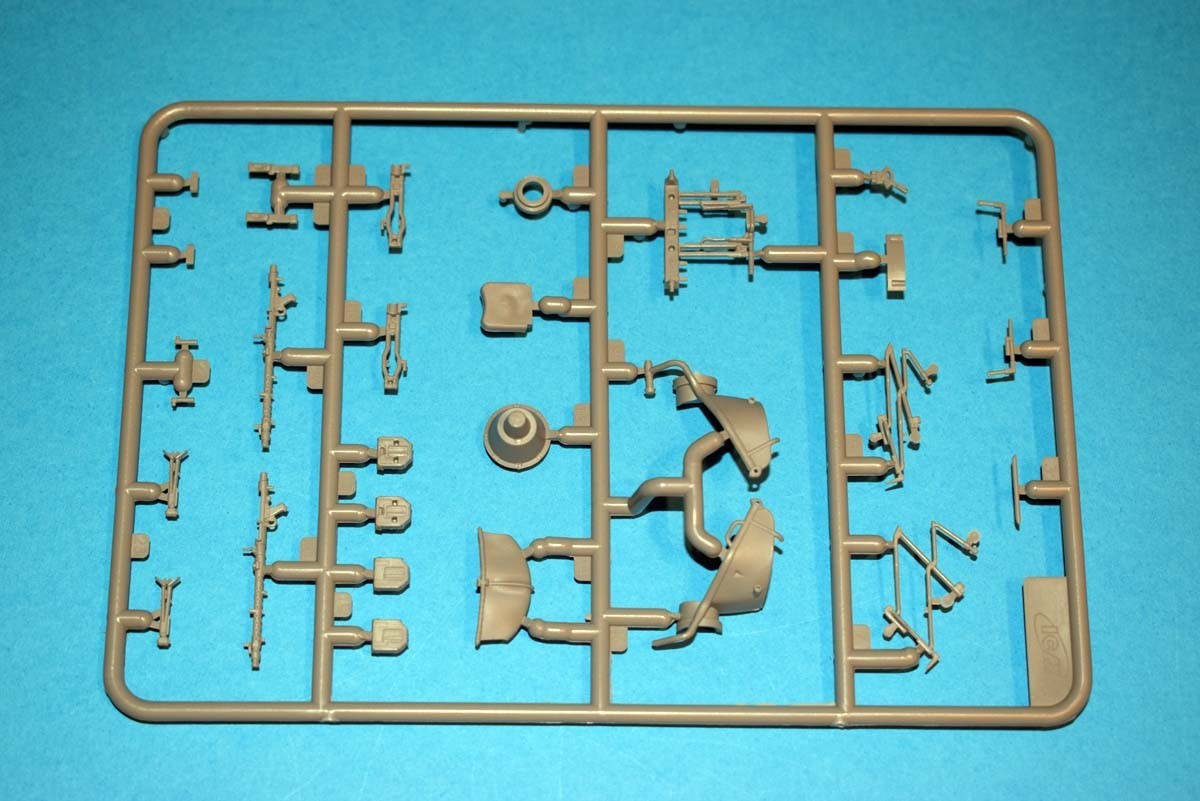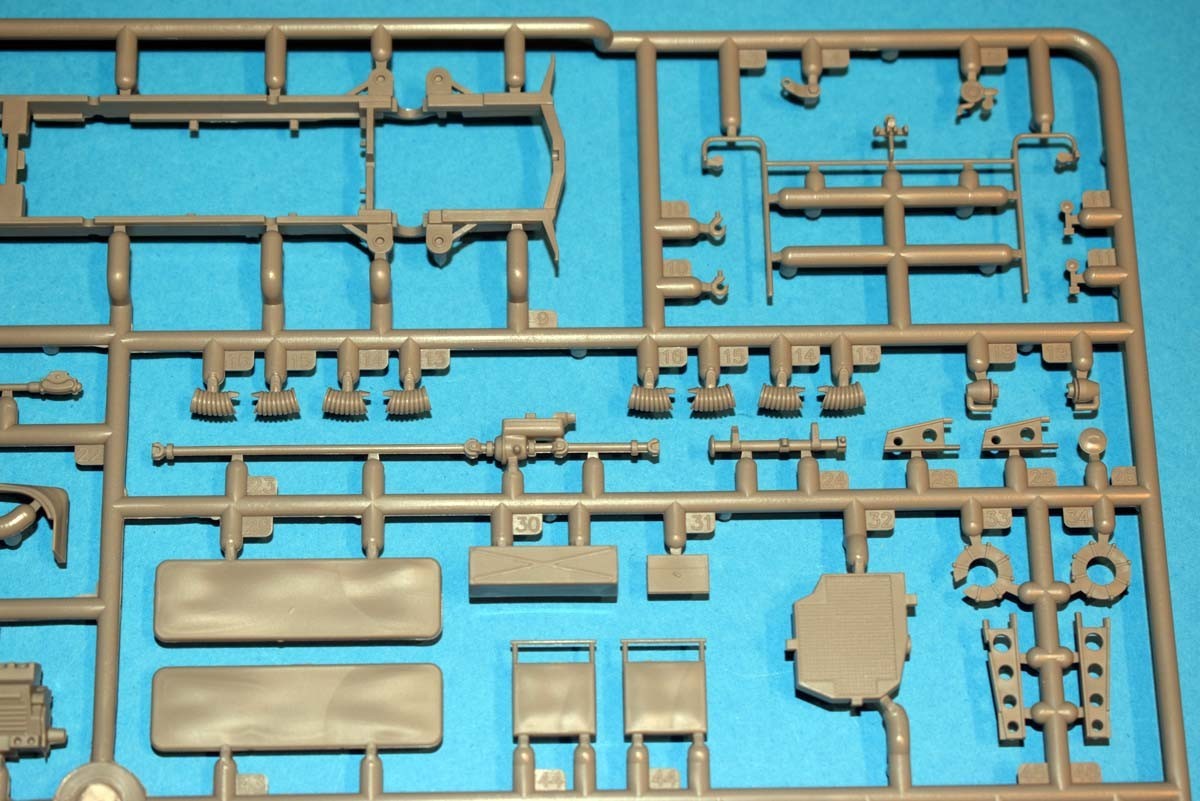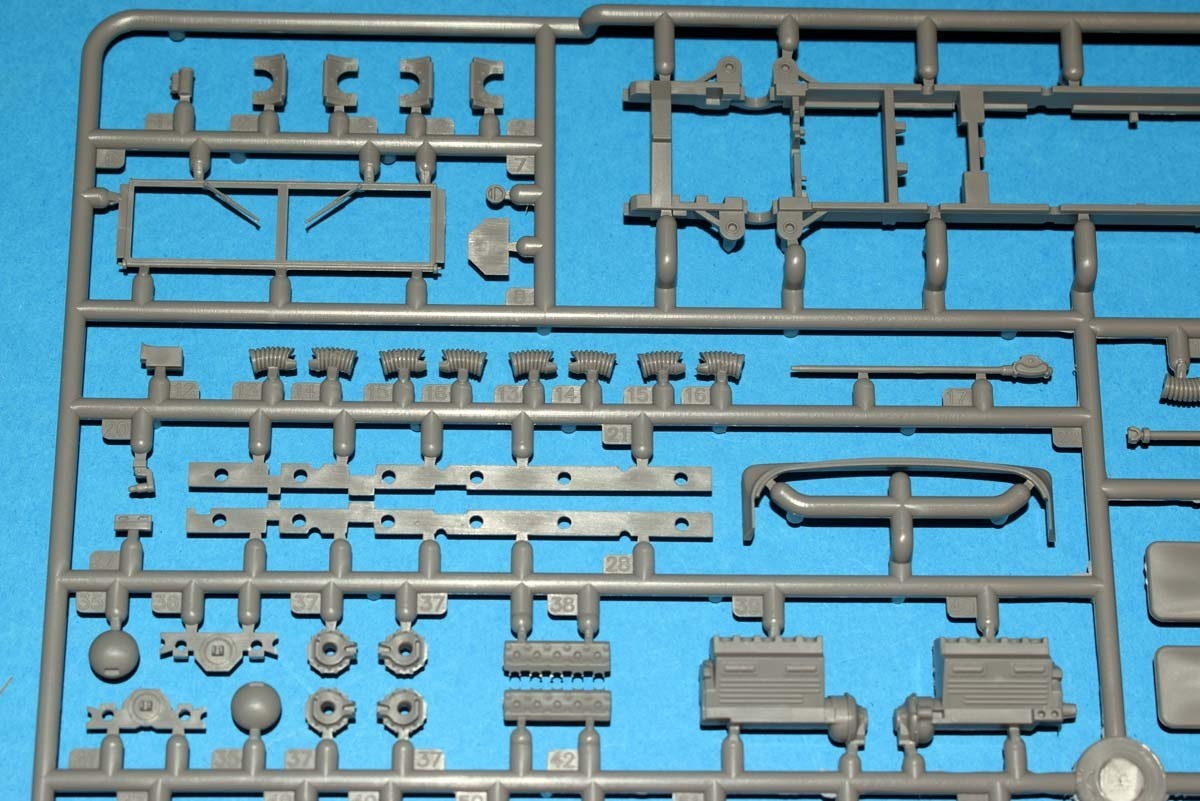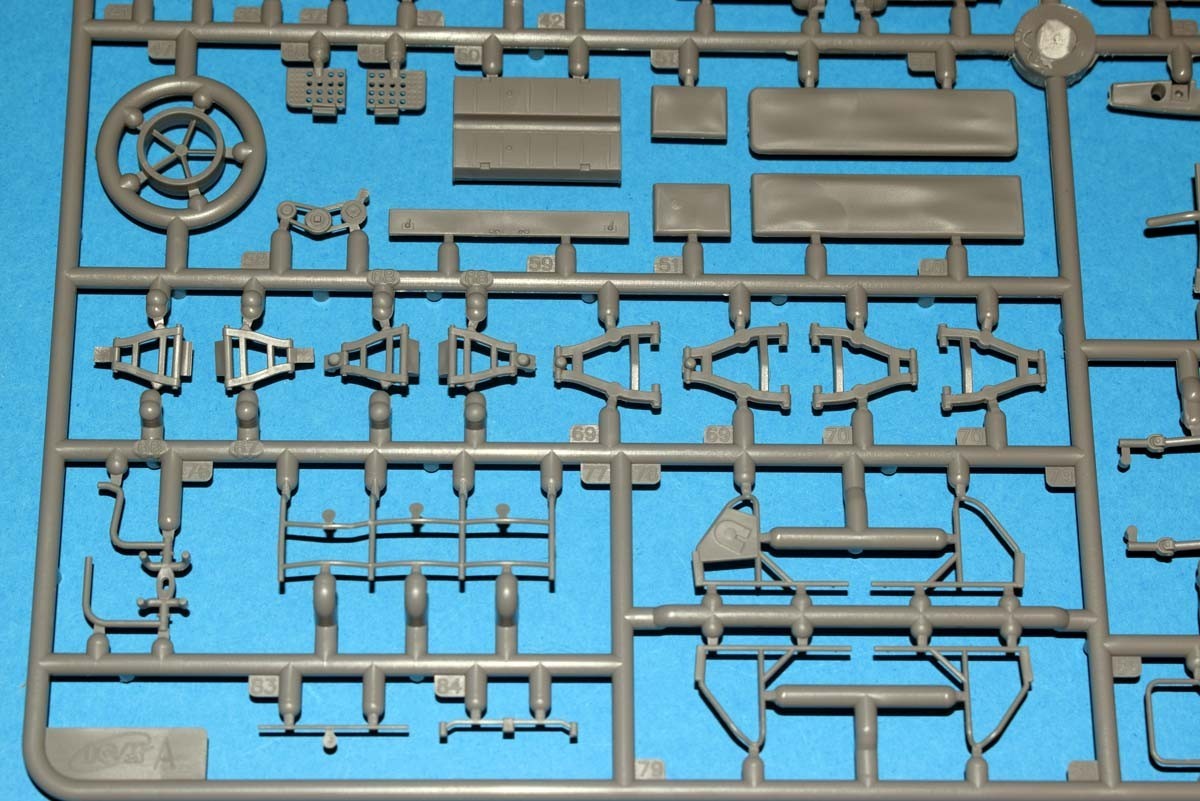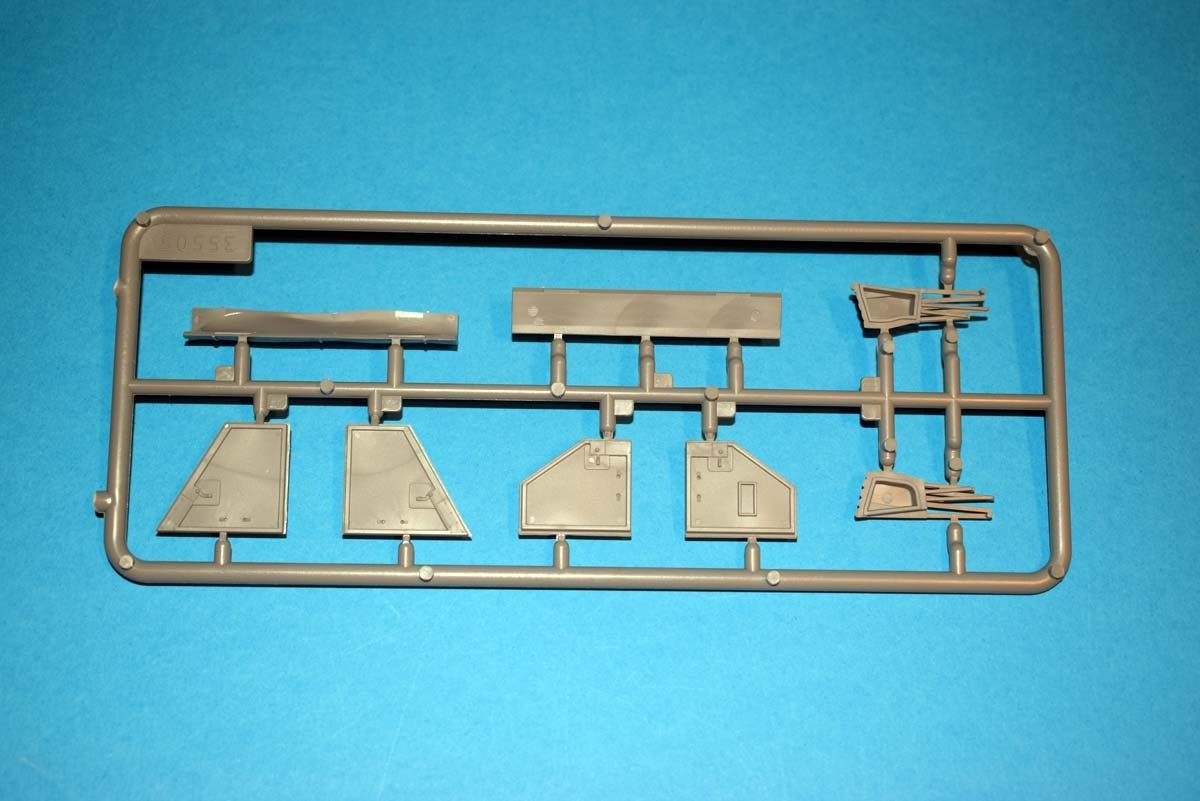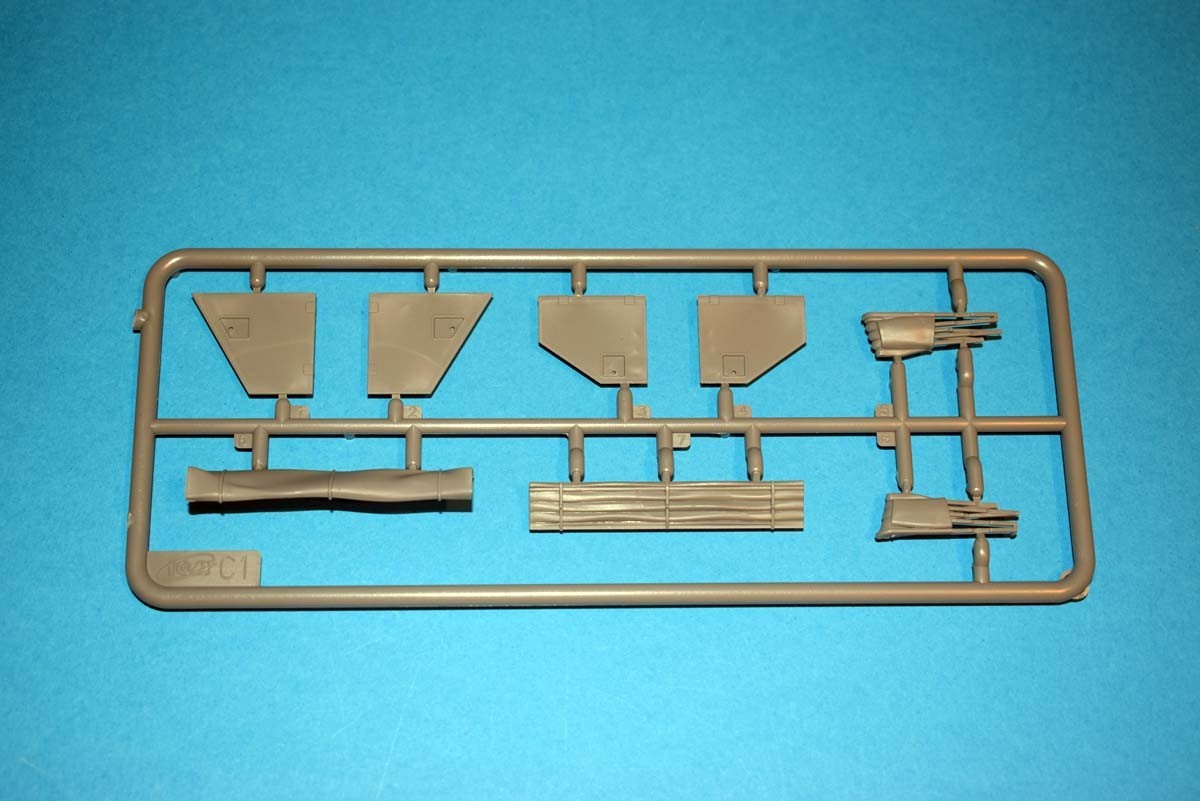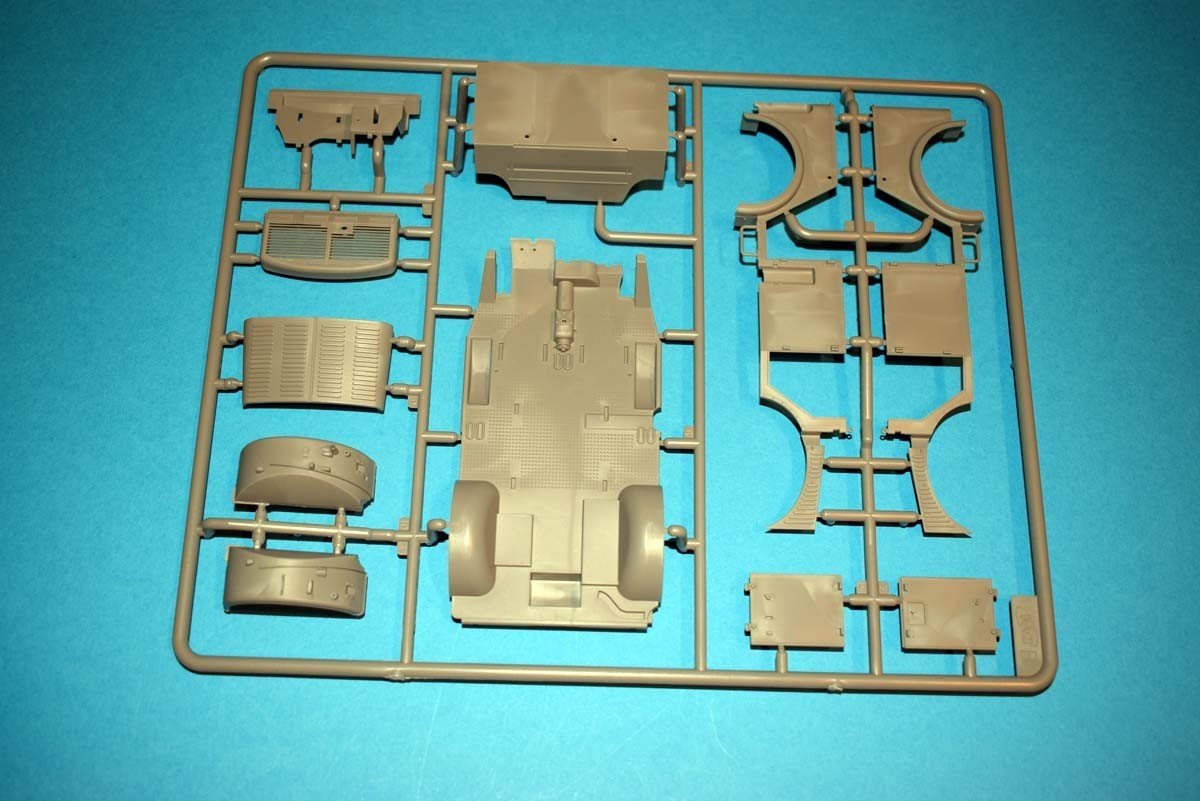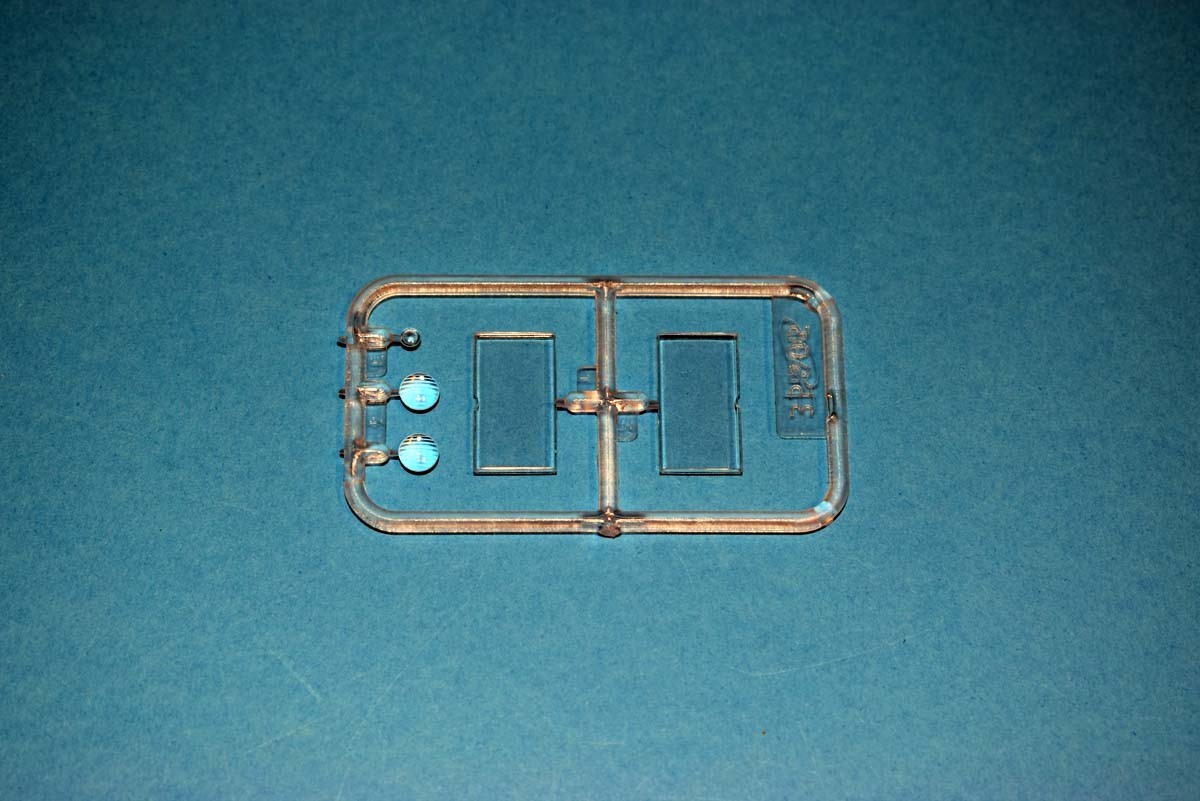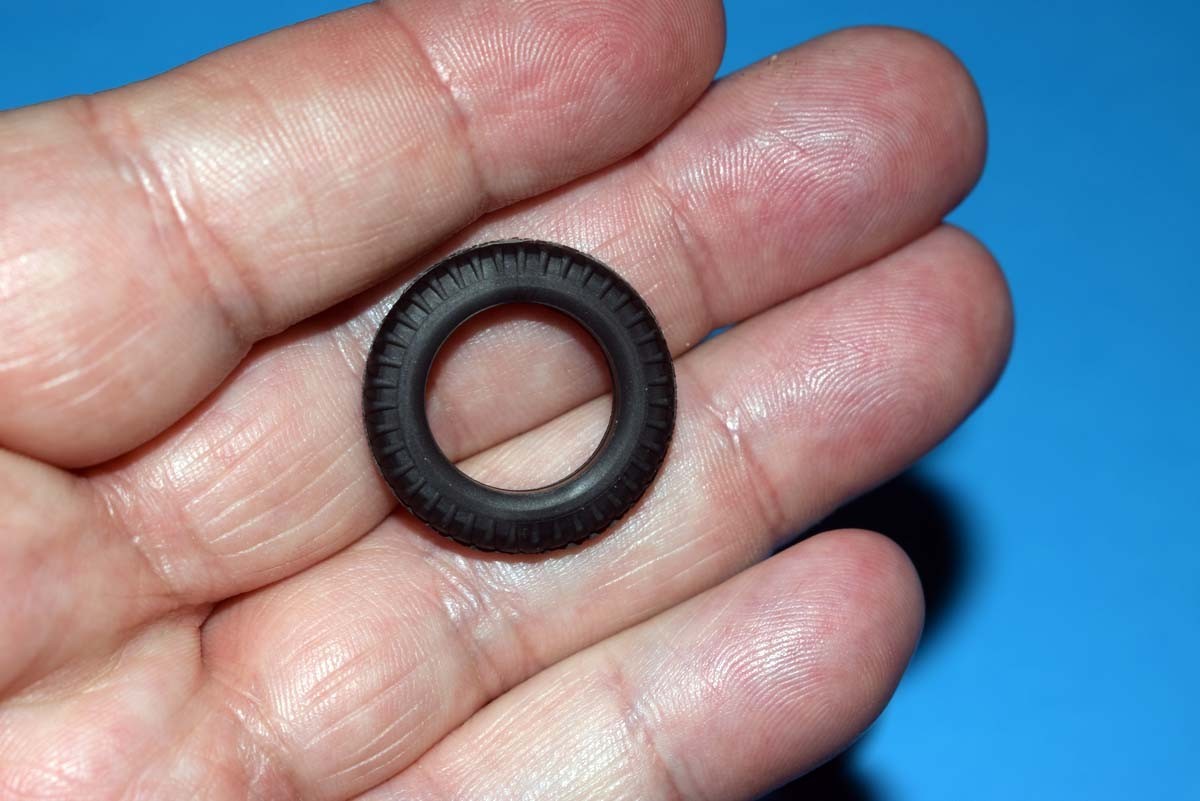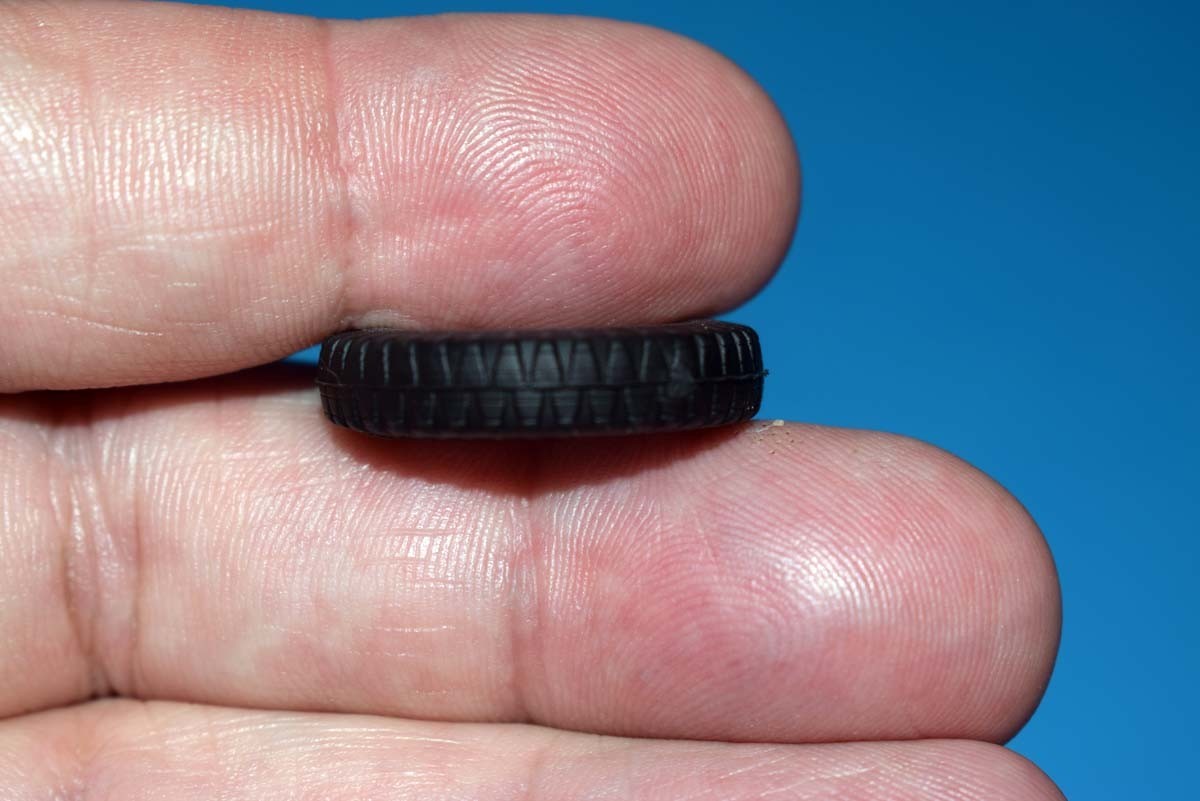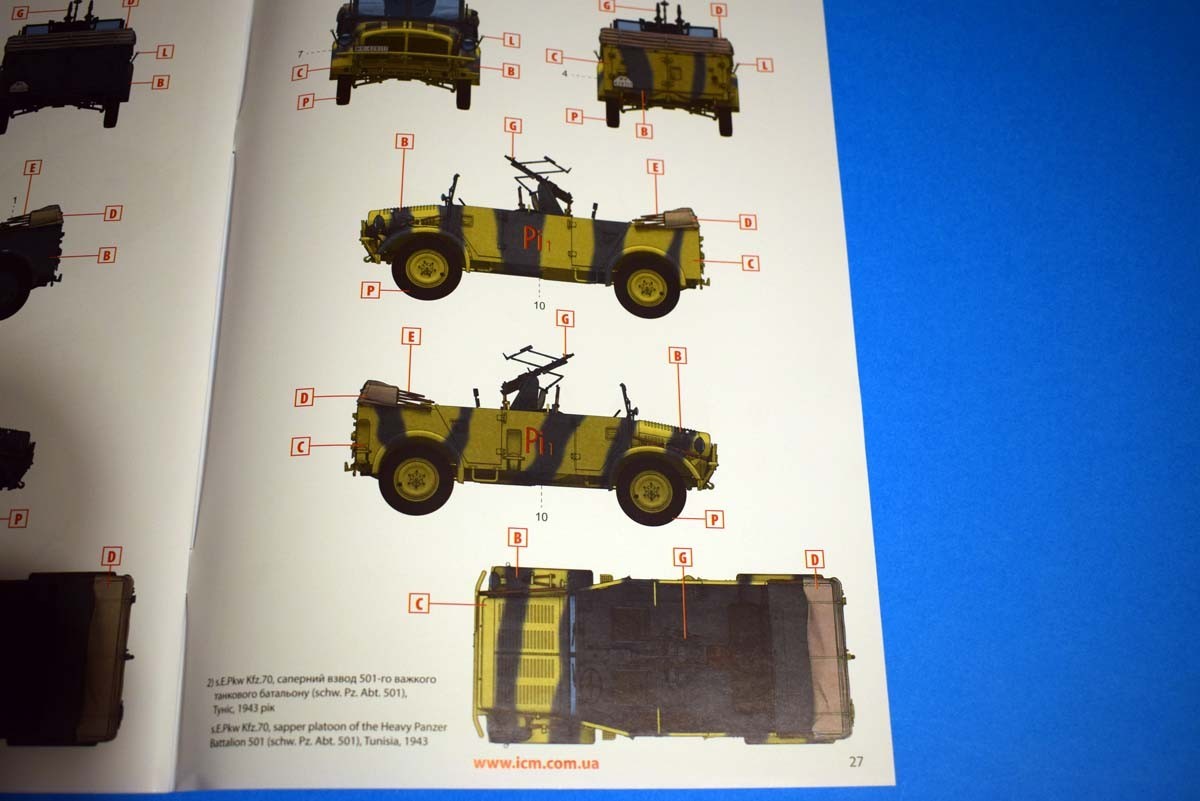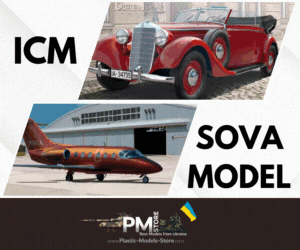
Introduction
The following introduction is from ICM:
Pkw Kfz.70 was one of the variants of the army vehicle Horch 108 Typ 40. It was originally produced by the German branch of Ford as a multi functional military off road vehicle. In the Wehrmacht units, the vehicle performed a wide range of tasks and was used on almost all fronts - from France to Stalingrad and from North Africa to Scandinavia. Some of these off road vehicle were equipped with the Zillingssockel 36 anti-aircraft machine gun, with 2 7.92mm MG 34 machine guns. As a result, they could be used to engage air targets or act as a ire support vehicle, hitting targets at a range of up to 2,000 metres.
Review
This offering from ICM is packaged in a flip top cardboard tray with an additional card lid. The parts inside are packaged in a single plastic bag. The clear parts Zwillingssockel pieces and tyres are all bagged separately. An examination of the contents reveals no obvious issues with the mouldings, there are ejector pins marks - some of which will need to be tackled. The gates between the sprue and the parts should be easily accessed, but the gate themselves are a little bigger than perhaps they need to be. I have not observed any flash being present, and my only concern is that some of the finer mouldings are at risk of breakage during removal it care is not taken.
With this release not being new as such, I will keep this review reasonably short as what you are getting is one of ICM’s Horch kits with the Zwillingssockel kit added. The chassis of this model is provided in a single piece, with all additional parts attaching to it. A good engine and gearbox is included. The chassis being a single moulding is one of those places where a search for ejector pins marks will be needed. The axles for the model do not easily allow you to show the front wheels turned, but the oily and dirty areas of the vehicle are well detailed overall. One area that will cause some complaints are the vinyl rubber tyres, which are a bit of a Marmite factor when it comes to modellers.
The interior detail of the model is good with decals provided for the instrument dials, good surface detail and I also like that the personal weapon stowage is provided with the secured rifles. Moving to the exterior and again detail is good throughout, particularly the front grille. The doors could be shown open, but this is not covered in the instructions, and despite the doors being single pieces detail on both faces is good. The bonnet/hood cannot be accurately displayed open to show the oily bits hidden underneath, unless a lot of surgery is undertaken.
The Zwillingssockel 36 has reasonable detail throughout its components. The barrels of the MG 36 machine guns could have been better if slide moulded, and instead you will need to drill out the ends of the barrels to improve their appearance. The weapon system itself is on a cone pivot, which is bolted directly on to the floor of the vehicle. The weapon can be assembled in a flat or elevated trajectory via the use of different parts that are supplied.
ICM has provided 3 finishing options for this release which are:
S.E.Pkw Kfz.70, Russia, Autumn 1942 (Probable appearance)
S.E.Pkw Kfz.70, Sapper Platoon of the Heavy Panzer Battalion 501 (Schw. Pz. ABT. 501), Tunisia, 1943
S.E. Pkw Kfz.70, Russia, Summer 1943 (probable appearance)
Conclusion
This offering from ICM of own or their Horch kits combined with the Zwillingssockel is a pleasing combination. The kit part quality is good, with the Zwillingssockel being particularly pleasing. The moulding quality will make a from the box build a pleasing result. Alternatively I believe the super detailers will find this kit a pleasing starting point, due to the oily and engineering parts being well replicated. I only real complaint is the inability to show the front wheels turned, and I believe difficult to cut and shut them to show them turned. With that said I do believe this will offer a pleasing result for most.
